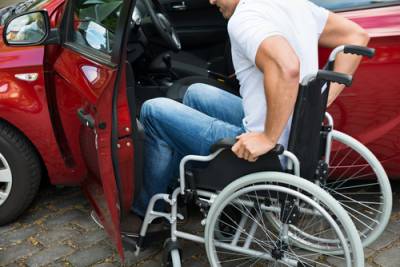Recent Blog Posts
Recidivism Risk Scores Used to Determine Sentencing Found to Be Unreliable
 When an individual is convicted of a crime in Wisconsin, prosecutors use a risk assessment score to determine their probability of recidivism (committing a future crime). This risk score can affect the sentencing process and, in some cases, may even nullify plea deal. Unfortunately, the algorithm used to determine this risk score has been found to be highly inaccurate. And that can mean serious trouble for your criminal defense case.
When an individual is convicted of a crime in Wisconsin, prosecutors use a risk assessment score to determine their probability of recidivism (committing a future crime). This risk score can affect the sentencing process and, in some cases, may even nullify plea deal. Unfortunately, the algorithm used to determine this risk score has been found to be highly inaccurate. And that can mean serious trouble for your criminal defense case.
How the Assessment Is Used to Determine Risk
Developed by the for-profit company, Northpointe, the Correctional Offender Management Profiling for Sanctions (COMPAS) assessment tool analyzes defendants on nearly two-dozen theoretic criminology factors, including “criminal personality,” “residence/stability,” “social isolation,” and “substance abuse.” The system then places the defendants into a low, medium, or high category. The higher their purported risk, the higher their propensity of committing a violent or subsequent crime is supposed to be.
Arson in Wisconsin Can Result in Serious Consequences When Someone Is Inadvertently Killed or Injured
 While arson crimes are typically considered less severe than those against people, they should never be taken lightly. This is especially true if someone is inadvertently killed or injured in the process. If you are up against arson charges in Wisconsin, or are facing arson charges along with additional charges because someone was killed or injured, it is critical that you know how the law may apply in your situation and where you can turn to for help.
While arson crimes are typically considered less severe than those against people, they should never be taken lightly. This is especially true if someone is inadvertently killed or injured in the process. If you are up against arson charges in Wisconsin, or are facing arson charges along with additional charges because someone was killed or injured, it is critical that you know how the law may apply in your situation and where you can turn to for help.
Arson Property Charges
In the state of Wisconsin, arson charges are typically divided into two categories: those that involve damage to a building and those that involve property other than a building. Considered a Class C felony, arson of a building is the more severe of the two and is punishable by up to 40 years in prison and fines up to $100,000. While still considered a felony (Class I), arson to non-building property is a lesser charge, punishable by up to three-and-a-half years in prison and fines up to $10,000.
Children and Apartments Can Lead to Severe Injuries and Death
 Each year, 15 to 20 children under age 11 die of injuries sustained after falling from a window. Another 15,000 suffer non-fatal injuries that may include brain damage, broken bones, and paralysis. Apartment windows are especially dangerous because of their height. If you live in an apartment building and have children, know what you can do to keep them safe and what you should do, if a fall does happen.
Each year, 15 to 20 children under age 11 die of injuries sustained after falling from a window. Another 15,000 suffer non-fatal injuries that may include brain damage, broken bones, and paralysis. Apartment windows are especially dangerous because of their height. If you live in an apartment building and have children, know what you can do to keep them safe and what you should do, if a fall does happen.
Know the Risks
According to statistics, children fall from the windows in apartment buildings at five times the rate of children living in other types of homes. Those that live in lower income neighborhoods, where windows may suffer from poor construction or condition, are at an even higher risk because these windows are not always up to code. Homes and apartment buildings without air conditioning also carry a higher risk since the window may be left open to allow for airflow. If you and your child live in any of these areas, be aware of the increased risk and take extra precautions to keep your child safe.
A Criminal Case or Conviction Can Have Unexpected and Long-Term Negative Consequences
 If you are facing criminal charges, you are mostly considering the immediate impact on your life. However, there may be other factors you have not considered. For example, a sexual assault conviction can dictate where you live and require that you register as a sex offender for a predetermined amount of time – possibly even the rest of your life. Even a drug charge, if serious enough, could limit your employment options upon your release. For one Wisconsin man, charged with two counts of murder and found not guilty by reason of mental disease, that impact is hindering his ability to find end-of-life medical care and treatment.
If you are facing criminal charges, you are mostly considering the immediate impact on your life. However, there may be other factors you have not considered. For example, a sexual assault conviction can dictate where you live and require that you register as a sex offender for a predetermined amount of time – possibly even the rest of your life. Even a drug charge, if serious enough, could limit your employment options upon your release. For one Wisconsin man, charged with two counts of murder and found not guilty by reason of mental disease, that impact is hindering his ability to find end-of-life medical care and treatment.
Found Not Guilty but Still Being Punished
Charged with murdering his wife and sister-in-law, the Dane County sheriff deputy was found not guilty by reason of medical disease. Unfortunately, that not guilty determination has done nothing for his reputation, which was essentially ruined because of the high-profile nature of his case. Now suffering from advanced amyotrophic lateral sclerosis (ALS), he is wheelchair-bound and dying. More than 40 different facilities have been contacted, all of which were asked to meet his medical needs, but not one has shown any interest. The mental health facility current meeting his needs is not fully equipped to do so, and there seems to be little hope for finding one that is in the near future.
Work Zone Negligence and Your Motor Vehicle Accident – Do You Have a Case?
 In the year 2010, the most recent year for which there are statistics available, 87,606 motor vehicle accidents occurred inside of road construction work zones. Of those, 0.6 percent resulted in fatality. Another 30 percent resulted in injury. Some are instances in which drivers failed to follow safe driving rules, but there are also others that may have been caused by negligence on the part of workers, contractors, or foreman. If you believe the latter may have been a factor in your accident case, the following points may be able to help you determine whether or not you have a case.
In the year 2010, the most recent year for which there are statistics available, 87,606 motor vehicle accidents occurred inside of road construction work zones. Of those, 0.6 percent resulted in fatality. Another 30 percent resulted in injury. Some are instances in which drivers failed to follow safe driving rules, but there are also others that may have been caused by negligence on the part of workers, contractors, or foreman. If you believe the latter may have been a factor in your accident case, the following points may be able to help you determine whether or not you have a case.
Work Zone Traffic Control and Your Safety
Roadway and highway work zones can be riddled with obstacles and dangers, including uneven pavement and potholes, concrete barriers, one-way traffic, closed lanes, workers, and construction vehicles and equipment. Sudden and frequent changes make these zones all the more treacherous for all involved. Rules and regulations that workers, foreman, and contractors must follow are designed to protect drivers, pedestrians, and even the workers themselves from death an injury.
Data Shows Growing Disparity in Drug Arrests throughout State
 Since the inception of the “War on Crime,” drug arrests have steadily increased across the nation – until recently. Some states have started to lean more toward treatment, rather than punishment. And, as indicated by data from the Wisconsin Department of Justice, the number of drug arrests in Wisconsin have decreased dramatically over the last four years. Unfortunately, the decrease does not mean that the war is finally coming to an end. In fact, statistics for the rest of the state would indicate that quite the opposite may be true.
Since the inception of the “War on Crime,” drug arrests have steadily increased across the nation – until recently. Some states have started to lean more toward treatment, rather than punishment. And, as indicated by data from the Wisconsin Department of Justice, the number of drug arrests in Wisconsin have decreased dramatically over the last four years. Unfortunately, the decrease does not mean that the war is finally coming to an end. In fact, statistics for the rest of the state would indicate that quite the opposite may be true.
Milwaukee Arrests Down but Rest of State Is Up
Between 2010 and 20014, drug arrests have gone down by nearly 50 percent in the city of Milwaukee (6,000 to less than 3,300). But the rest of the state has actually seen an 11 percent increase over that same time period, which amounts to approximately 2,200 more arrests each year. When examining the reasons behind the decrease in Milwaukee and the potential increases throughout the rest of the state, there are a number of possible factors – but none of them include treating drug addiction like an illness instead of a crime.
Are Severe Spinal Cord Injuries More Common in Car Accidents Involving Newer Vehicles?
 Automobiles have come a long way in preventing deaths over the last few decades. This is mostly due to the extensive research and work done regarding head and chest injuries, which are the most likely to cause a crash fatality. Unfortunately, a new study suggests that those very same advancements that have reduced head and chest injuries may have inadvertently caused an increased risk in spinal injuries, which can also lead to severe injury or fatality in an automobile accident.
Automobiles have come a long way in preventing deaths over the last few decades. This is mostly due to the extensive research and work done regarding head and chest injuries, which are the most likely to cause a crash fatality. Unfortunately, a new study suggests that those very same advancements that have reduced head and chest injuries may have inadvertently caused an increased risk in spinal injuries, which can also lead to severe injury or fatality in an automobile accident.
Side Impact, Seatbelts, and Airbags Took Priority
According to the Wisconsin researchers who uncovered the increased risk for spinal injuries, the main focus of automakers has been on the improvement of side impact crash ratings through the development of better airbags and seatbelts. New technology, such as making side-impact airbags standard on all vehicles after research found high death rates for side-impacts, also emerged. But as the features were added, seat designs were changed to accommodate. The end result has been an uptick in the number of lumbar spine injuries.
Police Shooting: Dashcam Footage Suggests Hostage Shot without Warning
 Each and every day, upstanding officers place their lives on the line to protect the public. They educate, inform, and guide our youths. But sometimes they lose sight of their jobs. And – just like in any other field – there are those who only took the position for power and authority over others, those who wrongfully convict, bend the rules, or even break the law themselves. It is the latter group that are often the subject of news castings on the corruption of law enforcement, but there is always an exception, and even good officers make mistakes.
Each and every day, upstanding officers place their lives on the line to protect the public. They educate, inform, and guide our youths. But sometimes they lose sight of their jobs. And – just like in any other field – there are those who only took the position for power and authority over others, those who wrongfully convict, bend the rules, or even break the law themselves. It is the latter group that are often the subject of news castings on the corruption of law enforcement, but there is always an exception, and even good officers make mistakes.
No one can say for certain which of the two groups may be at the center of an investigation on the shooting of a Wisconsin hostage. What can be said is that a possibly innocent man became an unsuspecting victim. And, even if he was not innocent, that man had the right to due process and civil protections, just like every other citizen. Unfortunately, evidence suggests that he received neither.
Will the Textalyzer Reduce the Number of Distracted Driving Accidents?
 More than 80 percent of drivers in the annual AAA Foundation Traffic Safety Culture Index recognize that there is a serious problem among drivers today – one that they say makes them feel less safe on the road than they did just a mere five years ago. That problem is distracted driving; more specifically, use of cell phones and other electronic devices while driving. It would make sense why they feel that way, considering distracted driving leads to approximately 5,000 deaths per year.
More than 80 percent of drivers in the annual AAA Foundation Traffic Safety Culture Index recognize that there is a serious problem among drivers today – one that they say makes them feel less safe on the road than they did just a mere five years ago. That problem is distracted driving; more specifically, use of cell phones and other electronic devices while driving. It would make sense why they feel that way, considering distracted driving leads to approximately 5,000 deaths per year.
Campaigns, commercials, programs, and even cell phone promotions discuss the issue and encourage people not to text and drive. Sadly, the problem only continues to get worse, especially among young drivers. But New York is now pushing for a law that would allow police officers to check whether or not a cell phone was in use immediately before a crash. Could the device they will use be the answer to America’s distracted driver problem? Only time will tell for certain, but many are hopeful.







